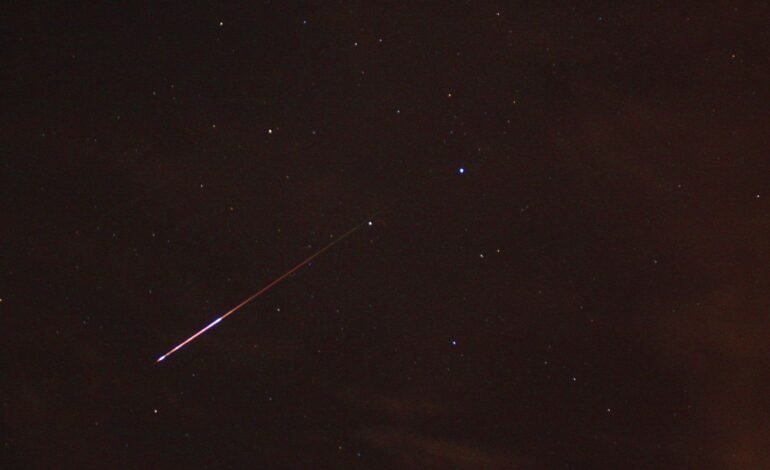August brings meteor showers and planetary shows
The Perseids peak this Wednesday alongside Venus and Jupiter, although the bright moon will reduce visibility.

Jared Tennant, CC BY 2.0, via Wikimedia Commons
Early Wednesday morning will witness one of the most anticipated astronomical events of the summer: the peak of the Perseid meteor shower, coinciding with a conjunction between Venus and Jupiter, which will be seen superimposed as a very bright star.
However, this year the celestial spectacle will have a guest who will dampen the intensity: a moon illuminating the sky during peak activity. This will reduce the number of meteors visible in the early morning, dropping from the usual 60 to 100 shooting stars per hour in dark sky conditions to about 10 to 20 per hour, according to the American Meteor Society.
Thaddeus LaCoursiere, planetarium program coordinator at the Bell Museum in St. Paul, Minnesota, advises patience: “This year, I recommend going out a week after the peak, when the moon is less bright.” The Perseid meteor shower can be observed until August 23.
What are the Perseids?
Meteor showers occur when the Earth passes through clouds of dust and rocks left behind by comets or, sometimes, asteroids. In the case of the Perseids, the source is the comet 109P/Swift-Tuttle.
Upon entering the Earth's atmosphere at high speed, these fragments heat up and disintegrate, producing bright flashes and, occasionally, an incandescent trail: the popular "shooting stars."
Tips for observing them
- Best time: shortly before dawn, when the moon is low.
- Ideal location: far from the light pollution of cities.
- Patience and a view of the sky: Avoid looking at screens to allow your eyes to adapt to the darkness.
- Climate: clear nights and, if possible, without a full or almost full moon.
What's coming
If you miss the Perseids or want more celestial activity, the next big event will be the Orionid meteor shower, which peaks in late October.
For more stories like this, follow More Latin.
Sources:
